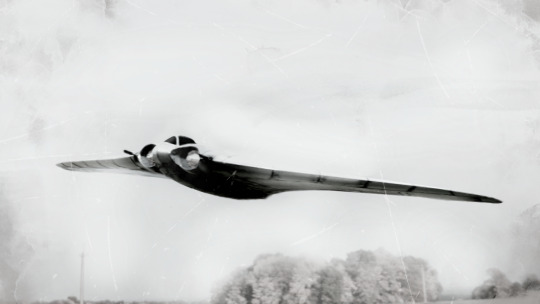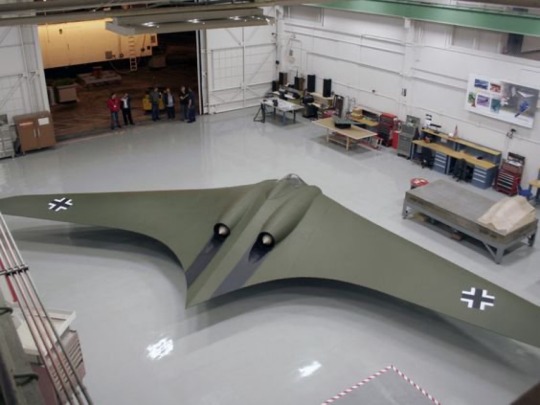#horton ho 229
Explore tagged Tumblr posts
Text

Horton Ho 229 V3, captured and shipped back to the States. This is the one and only time it was assembled. When captured in Germany it was incomplete, the fuselage/centre section was many miles away from the outer wing panels when discovered by US troops. The Ho 229 was the only jet powered flying wing that actually flew during the war.
The second prototype, V2, was destroyed and the pilot killed on its second powered flight. This is the third prototype and was taken to America under Operation Paperclip. It was the world's first stealth aircraft, although its stealth capabilities were only discovered after computer modelling in the 21st century. For more, see my Facebook group - Eagles Of The Reich
#germany#ww2#luftwaffe#ww2 aircraft#horton#horton ho 229#ho 229#german jet fighters#stealth aircraft#operation paperclip
219 notes
·
View notes
Text



Ho-229 Commission for Sovietrainbow! Learned a lot and got to experiment with different ways of approaching a workflow to producing a model! Also a bit of post processing lol
#art#my art#3d modeling#3d art#3d model#3d#3d render#blender#airplane#aircraft#horton#ho-229#fighter jet#second world war#world war 2#wwii
66 notes
·
View notes
Text

The Horten Ho 229, late WW2 German prototype fighter/bomber. First flying wing powered by a jet engine. First to incorporate stealth technology.
@ron_eisele via X
27 notes
·
View notes
Photo


So, tonight I’ve been doing something I’ve wanted to for a long time, and redrawing some characters I was working on for a fanfic years and years ago (and 3d comic before that) called Transformers: 1942. Basic idea is fairly simple - Transformers wake up in 1942 instead of 1984, in the middle of WW2. Decepticons side with the Axis powers, while the Autobots side with the Allies.
I’ve had the idea of revisiting the characters for a long time. I have gone and done several takes over the years, but Skywarp was never one I came back to. All of the Decepticon jets were rendered as air vehicles I found on the Luftwaffe 1942 site, which were in-development vehicles at the end of the war by the Luftwaffe. Skywarp was a Horton Ho 229, Thundercracker as I recall had a giant prop in the centre of his fuselage, and Starscream was an Aredo E.555 flying wing bomber. Skywarp had some funky stuff going on with her head, as can be seen in the colour picture - she looked more like the classic Cybercontroller from Tomb of the Cybermen rather than anything. Now, I’ve taken inspiration from Nagatoro.
Completely not finished yet. Transformation might not work out this way, but it gives me something to start playing with. I want to come back and do some more characters and scenes, but... maybe I should, with a bit of history, as a memory aid.
3 notes
·
View notes
Photo

This game never ceases to amaze me
9 notes
·
View notes
Note
I don't suppose you could add the names of the german super weapons so I could read up on them further?
From top to bottom in order
Me-262
ZG 1229 Vampir
V1 missile
V2 rocket
Horton Ho-229
Me-163 Komet
Fritz X radio guided bomb
BV-40 glider fighter
Maus
Landkreutzer P.1000 Ratte
Schwerer Gustav
German atom bomb project
Taifun coal dust gun
Triebflugel
Heliobeam
Die Glocke
37 notes
·
View notes
